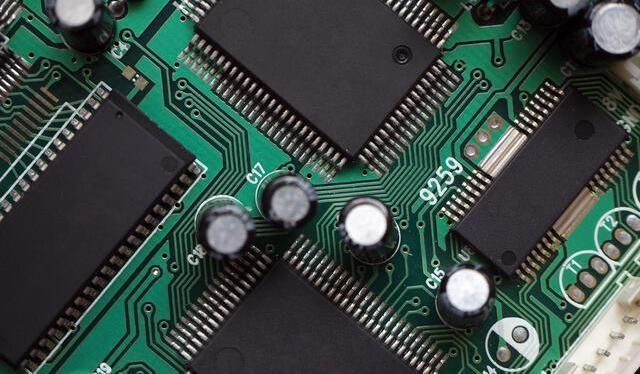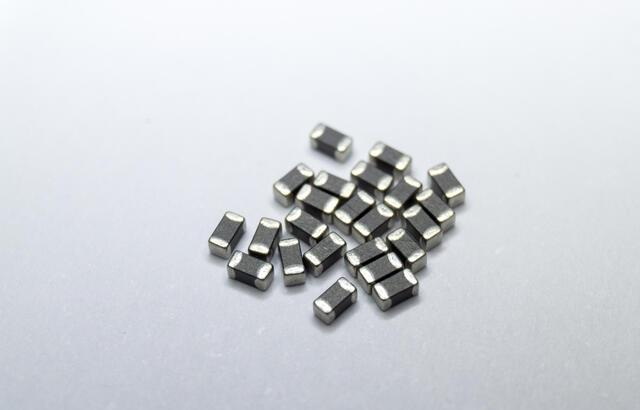Content Menu
● Introduction
● Understanding SMT Stencil Area Ratio
>> What is SMT Stencil Area Ratio?
>> Why is Area Ratio Important?
● How Stencil Thickness Influences SMT Stencil Area Ratio
>> Direct Impact on Area Ratio
>> Effects on Solder Paste Release
>> Additional Considerations: Aspect Ratio vs. Area Ratio
● Balancing Stencil Thickness and Area Ratio in SMT Design
>> Considerations for Different Component Sizes
>> Adjusting Aperture Dimensions
>> Nano-Coatings and Advanced Stencil Technologies
● Practical Examples of Stencil Thickness Impact
● Additional Factors Influencing SMT Stencil Area Ratio and Paste Printing
>> Stencil Material and Surface Finish
>> Solder Paste Characteristics
>> Printing Parameters
● Best Practices for Optimizing SMT Stencil Thickness and Area Ratio
● Conclusion
● FAQ
>> 1. What is the recommended minimum SMT stencil area ratio for good solder paste release?
>> 2. How does increasing stencil thickness affect solder paste printing?
>> 3. Can stencil aperture size compensate for thicker stencils?
>> 4. Do nano-coatings on stencils eliminate the need to maintain a high area ratio?
>> 5. What stencil thickness is recommended for printing fine-pitch components like 01005?
Introduction
In Surface Mount Technology (SMT) assembly, stencil printing is a critical process that directly influences solder paste deposition quality and, consequently, the reliability of electronic assemblies. One of the most important parameters in stencil design is the SMT stencil area ratio. This ratio impacts solder paste release efficiency, which affects solder joint quality and overall production yield.

This article explores how stencil thickness affects the SMT stencil area ratio, its implications for solder paste printing, and best practices for optimizing stencil design to achieve superior SMT assembly results. We will also delve into related factors such as aperture shape, stencil materials, and advanced technologies that interplay with stencil thickness and area ratio.
Understanding SMT Stencil Area Ratio
What is SMT Stencil Area Ratio?
The SMT stencil area ratio is defined as the ratio of the aperture opening area to the area of the aperture walls (the inside surface of the stencil aperture). It is a two-dimensional measurement that reflects how easily solder paste can be released from the stencil aperture onto the PCB pad.
Mathematically, for rectangular apertures, the area ratio (AR) is calculated as:
AR=2×(L+W)×TL×W
Where:
L = length of the aperture
W = width of the aperture
T = stencil thickness
For circular apertures, the formula simplifies to:
AR=4×TD
Where D is the diameter of the aperture.
Why is Area Ratio Important?
The area ratio is a crucial factor because it determines the paste release efficiency during stencil printing. A higher area ratio means the aperture opening is large relative to the wall area, making it easier for solder paste to release cleanly onto the PCB pad. Conversely, a low area ratio indicates a relatively thick stencil or small aperture, increasing the likelihood that solder paste will stick to the aperture walls rather than transferring to the board.
Industry experience and IPC guidelines recommend a minimum area ratio of 0.66 for reliable solder paste transfer with standard stainless steel stencils without special coatings. Falling below this threshold often results in incomplete paste release, leading to insufficient solder deposits and potential assembly defects.
How Stencil Thickness Influences SMT Stencil Area Ratio
Direct Impact on Area Ratio
Since stencil thickness T is in the denominator of the area ratio formula, increasing stencil thickness decreases the area ratio, assuming aperture dimensions remain constant. Conversely, reducing stencil thickness increases the area ratio.
For example, consider a square aperture of side S :
AR=4×TS
- If T increases, AR decreases.
- If T decreases, AR increases.
This relationship means that thicker stencils make it more challenging to maintain an area ratio above the recommended 0.66 threshold, especially for small apertures used with fine-pitch components.
Effects on Solder Paste Release
A lower area ratio caused by thicker stencils results in:
- Reduced paste transfer efficiency: More solder paste sticks to the aperture walls.
- Increased risk of insufficient solder volume on pads, leading to weak joints or open circuits.
- Greater variability in paste volume, reducing print consistency.
- Potential for solder bridging or insufficient fillet formation.
On the other hand, thinner stencils improve area ratio and paste release but may not provide enough solder paste volume for larger components or pads requiring thicker deposits.
Additional Considerations: Aspect Ratio vs. Area Ratio
While the area ratio focuses on the relationship between aperture opening area and aperture wall area, the aspect ratio (aperture opening width divided by stencil thickness) is another commonly referenced metric in stencil design. Both ratios are interrelated and influence paste release.
- Aspect ratio is often used to assess the aperture's ability to release paste, with recommended minimum values around 1.5.
- However, area ratio is considered a more comprehensive metric because it accounts for the entire aperture perimeter relative to thickness.
Stencil thickness directly affects both ratios, but area ratio provides a better prediction of paste release performance, especially for non-rectangular apertures.

Balancing Stencil Thickness and Area Ratio in SMT Design
Considerations for Different Component Sizes
- Fine-pitch components (e.g., 01005, 0201, micro BGAs): These require very small apertures. To maintain an area ratio ≥ 0.66, stencil thickness often needs to be reduced (sometimes as thin as 62 µm or 2.5 mils). Thinner stencils help ensure paste release but may require more frequent cleaning due to faster wear.
- Standard SMT components: Typically use thicker stencils (100 µm or 4 mils) to ensure sufficient paste volume while maintaining area ratio above 0.66. This thickness balances paste volume and release efficiency for most applications.
- Large pads or components: May require thicker stencils for adequate paste volume, but aperture size can be increased to maintain area ratio. For example, for connectors or large QFP pads, thicker stencils (up to 150 µm or 6 mils) are common.
Adjusting Aperture Dimensions
If stencil thickness cannot be reduced due to paste volume requirements or mechanical strength, aperture dimensions (length and width) can be increased to improve area ratio. However, increasing aperture size may cause solder paste bridging or excessive solder volume, so it must be balanced carefully.
Designers often use aperture tuning techniques such as:
- Step-down apertures: Slightly reducing aperture size to control paste volume.
- Windowpane apertures: Using multiple small apertures within a large pad area to control paste volume and reduce bridging.
- Non-rectangular apertures: Rounded or trapezoidal shapes can improve paste release characteristics.
Nano-Coatings and Advanced Stencil Technologies
Nano-coatings on stencil walls reduce solder paste adhesion, enabling better paste release even at lower area ratios. These coatings create a hydrophobic or low-friction surface that prevents solder paste from sticking to the aperture walls.
However, IPC guidelines still recommend maintaining the 0.66 area ratio when using self-assembled monolayer coatings (Microshield) because the coatings improve but do not guarantee perfect paste release.
Electroformed stencils, which have superior release characteristics and smoother aperture walls, allow for lower aspect and area ratios compared to chemically etched or laser-cut stencils. Electroforming also enables very thin stencil thicknesses, improving area ratio for fine-pitch applications.
Practical Examples of Stencil Thickness Impact
| Aperture Shape | Aperture Size | Stencil Thickness | Calculated Area Ratio | Paste Release Expectation |
| Square (10 mil) | 10 mil x 10 mil | 5 mil | 0.5 | Below recommended; poor release |
| Square (10 mil) | 10 mil x 10 mil | 3 mil | 0.83 | Good release expected |
| Circular (13.5 mm) | 13.5 mm diameter | 5 mm | 0.675 | Meets minimum threshold |
This table illustrates how reducing stencil thickness improves area ratio and paste release, especially for small apertures.
Additional Factors Influencing SMT Stencil Area Ratio and Paste Printing
Stencil Material and Surface Finish
The stencil material and surface finish also impact solder paste release. Standard stainless steel stencils are widely used due to their durability and precision. However, their surface roughness can cause solder paste to adhere to aperture walls, especially at low area ratios.
Coatings such as electropolishing or nano-coatings reduce surface roughness and improve paste release, effectively enhancing the functional area ratio beyond the geometric calculation.
Solder Paste Characteristics
The rheology and particle size distribution of solder paste influence how well paste releases from apertures. Paste with smaller particle sizes and optimized viscosity can improve release, partially compensating for lower area ratios.
Printing Parameters
Printing speed, pressure, and snap-off distance also affect paste release. For thicker stencils with lower area ratios, optimizing these parameters can help improve paste transfer efficiency.
Best Practices for Optimizing SMT Stencil Thickness and Area Ratio
1. Select stencil thickness based on component size and paste volume requirements. Use thinner stencils for fine-pitch components to maintain a high area ratio.
2. Calculate area ratio early in the design phase. Ensure all apertures meet or exceed the 0.66 threshold.
3. Use aperture tuning techniques such as step-down apertures or windowpane designs to control paste volume without compromising area ratio.
4. Consider advanced stencil technologies like electroformed stencils or nano-coatings for improved paste release.
5. Coordinate with solder paste suppliers to select paste formulations optimized for your stencil design.
6. Regularly inspect and clean stencils to maintain aperture integrity and consistent paste release.
Conclusion
Stencil thickness plays a pivotal role in determining the SMT stencil area ratio, which is a key metric influencing solder paste transfer efficiency and print quality. Increasing stencil thickness reduces the area ratio, leading to poorer paste release and potential defects in solder joints. To achieve reliable SMT assembly, designers must carefully select stencil thickness in conjunction with aperture dimensions to maintain an area ratio of at least 0.66. Advanced stencil coatings and manufacturing techniques offer additional options to improve paste release at lower area ratios but do not replace the fundamental importance of optimizing stencil thickness. By understanding and managing the relationship between stencil thickness and area ratio, manufacturers can enhance solder paste printing performance, reduce defects, and improve overall production yield.

FAQ
1. What is the recommended minimum SMT stencil area ratio for good solder paste release?
The industry standard minimum area ratio is 0.66. Maintaining this ratio ensures effective solder paste transfer from the stencil to the PCB pad.
2. How does increasing stencil thickness affect solder paste printing?
Increasing stencil thickness decreases the area ratio, making it harder for solder paste to release cleanly from apertures, which can lead to insufficient solder volume and printing defects.
3. Can stencil aperture size compensate for thicker stencils?
Yes, increasing aperture size can improve area ratio and paste release, but this must be balanced to avoid solder bridging or excessive paste deposits.
4. Do nano-coatings on stencils eliminate the need to maintain a high area ratio?
Nano-coatings reduce solder paste adhesion to stencil walls but do not eliminate the need for a minimum area ratio of 0.66, especially with self-assembled monolayer coatings.
5. What stencil thickness is recommended for printing fine-pitch components like 01005?
For very small apertures required by 01005 components, stencil thicknesses as low as 62 µm (2.5 mils) may be necessary to achieve acceptable area ratios and paste transfer.




















